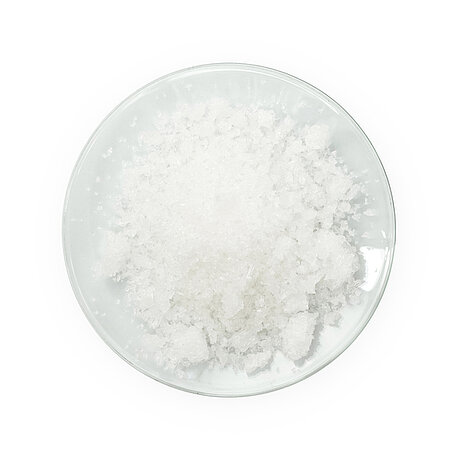Salt phosphate

Salt phosphate is an additive that is contained in some dog foods. It is a compound of sodium, phosphorus and oxygen that is used as a preservative, stabilizer or emulsifier. Salt phosphate can have different names, such as sodium phosphate, disodium phosphate or trisodium phosphate.
Why is salt phosphate used in dog food?
Salt phosphate has several functions in dog food. Firstly, it can extend the shelf life of the food by lowering the pH value and inhibiting the growth of microorganisms. Secondly, it can improve the texture, taste and appearance of the food by promoting the binding of water and fat and stabilizing the color. Salt phosphate can also serve as a source of phosphorus for dogs, as phosphorus is an important mineral for bone structure, energy metabolism and cell function.
What are the benefits of salt phosphate in dog food?
Salt phosphate can have several advantages for dog food and dogs. On the one hand, it can increase the quality and safety of the food by preventing mold growth and spoilage. Secondly, it can increase the acceptability and digestibility of the food by making it more palatable and softer. Salt phosphate can also cover the dog's phosphorus requirement, which is between 0.5 and 1.2 grams per kilogram of food, depending on the dog's age, size and state of health.
What are the disadvantages of salt phosphate in dog food?
Salt phosphate can also have some disadvantages for the dog food and the dog. Firstly, it can disturb the nutritional balance of the food by increasing the sodium and phosphorus content and reducing the potassium and calcium content. This can lead to an imbalance in the dog's electrolyte and mineral balance, which can contribute to heart, kidney or bone problems. On the other hand, salt phosphate can increase the dog's fluid intake by stimulating thirst. This can overload the kidneys or dilute the blood, which can contribute to edema or blood clotting problems.
How much salt phosphate is allowed in dog food?
The European Union has set limits for the addition of salt phosphate in dog food. These are a maximum of 5 grams per kilogram of food for sodium phosphate, a maximum of 4 grams per kilogram of food for disodium phosphate and a maximum of 3 grams per kilogram of food for trisodium phosphate. These amounts are considered safe for the dog's health as long as the food is balanced and the dog has sufficient water available.
How do I recognize salt phosphate in dog food?
Salt phosphate must be declared on the list of ingredients of the dog food. Various names can be used, such as E 339 for sodium phosphate, E 450 for disodium phosphate or E 451 for trisodium phosphate. You can also check the nutritional information on the food for the sodium and phosphorus content. A high content of these minerals may indicate a high proportion of salt phosphate.
How do I avoid salt phosphate in dog food?
If you want to avoid salt phosphate in dog food, you can look for alternatives that do not contain this additive. For example, you can choose organic food, natural food or homemade food, which generally do not contain any artificial preservatives, stabilizers or emulsifiers. You can also pay attention to the quality and freshness of the food, which also have an influence on the shelf life and appearance of the food.
Salt phosphate is an additive that is contained in some dog foods. It has various functions, such as preserving, stabilizing or emulsifying the food. Salt phosphate can have some benefits for the dog food and the dog, such as extending shelf life, improving texture and taste or meeting phosphorus requirements. However, salt phosphate can also have some disadvantages for the dog food and the dog, such as disturbing the nutrient balance, increasing fluid intake or stressing heart, kidney or bone function. The European Union has set limits for the addition of salt phosphate in dog food, which are considered safe as long as the food is balanced and the dog has sufficient water available. If you want to avoid salt phosphate in dog food, you can look for alternatives that do not contain this additive, pay attention to the quality and freshness of the food or consult your vet.
If you notice any signs of hypersensitivity or poisoning in your dog, you should see your vet immediately. We are not a substitute for a vet, but we try to be as accurate as possible. Every dog reacts differently and we recommend you get a second opinion or consult your vet if in doubt.
Stay healthy and take good care of your four-legged friend!😊